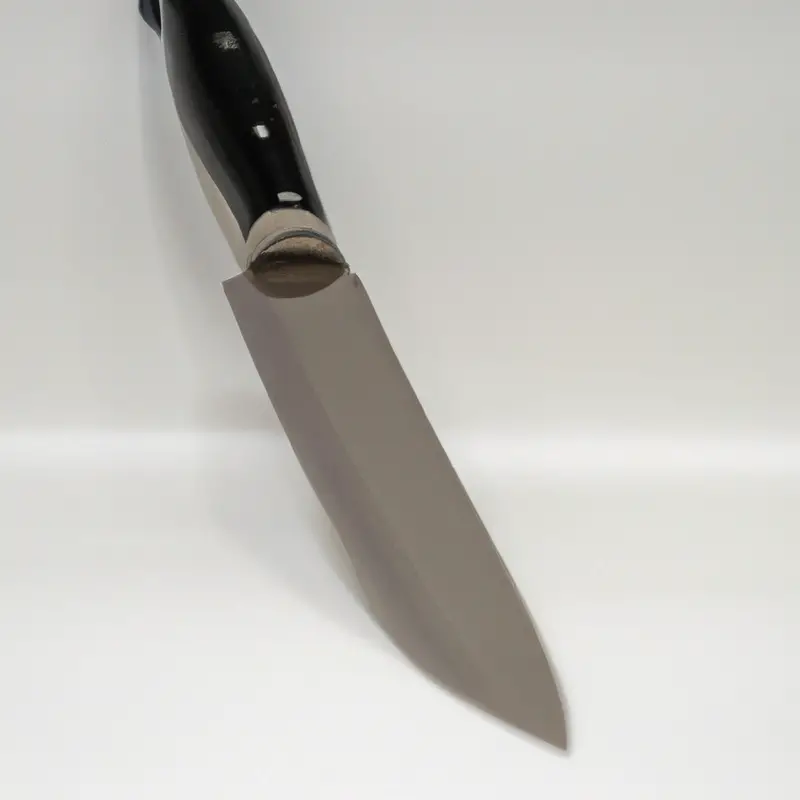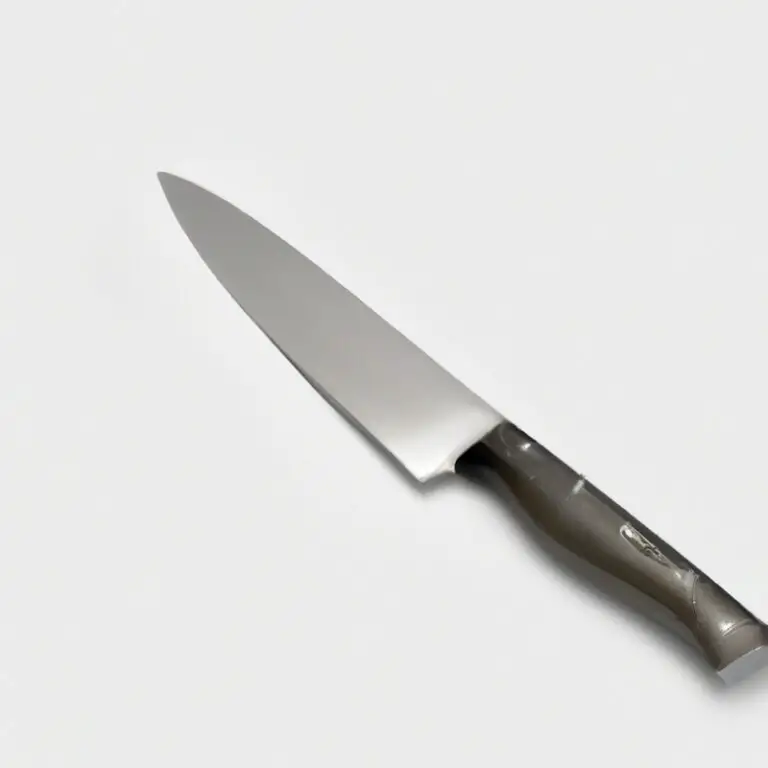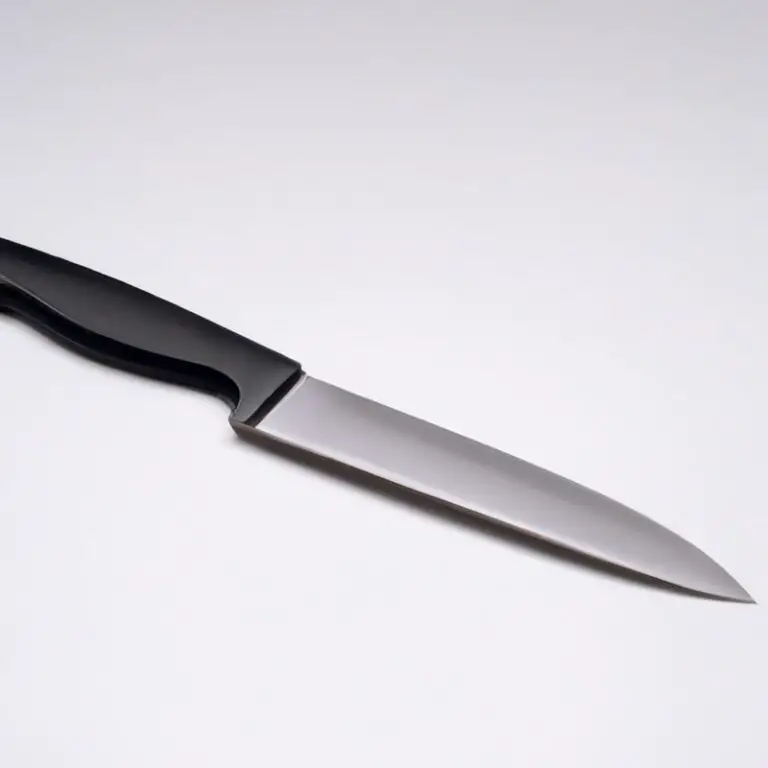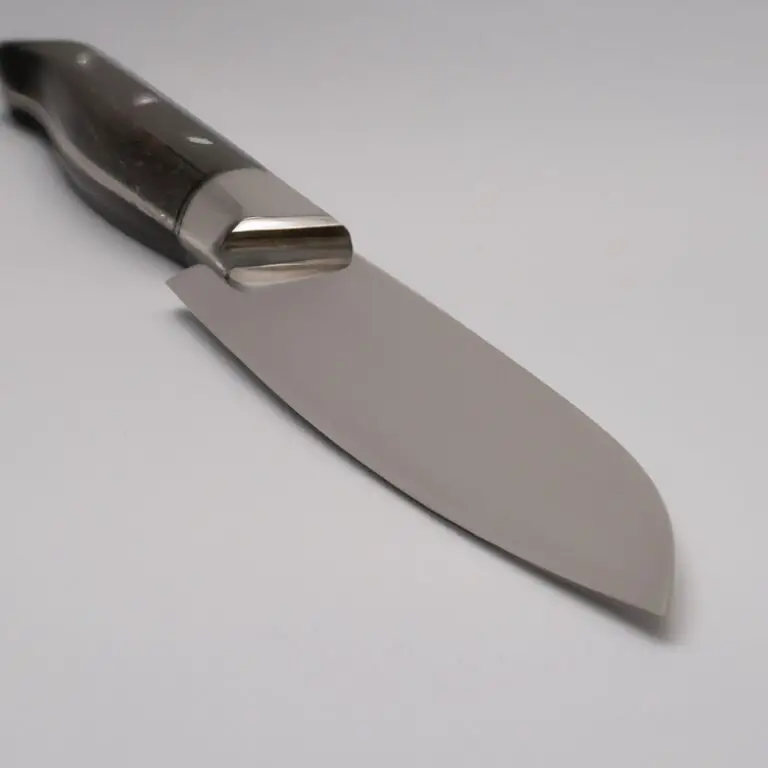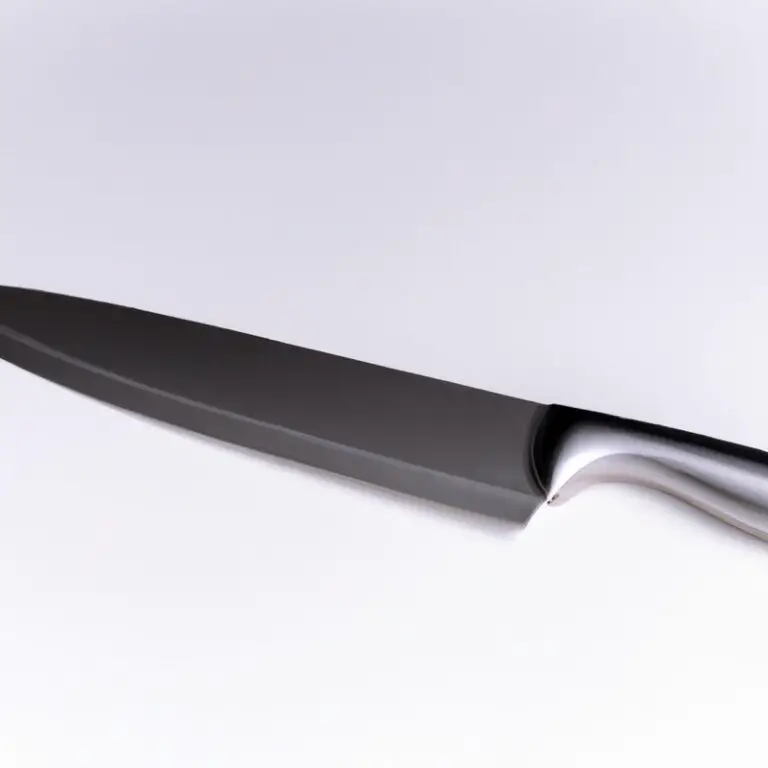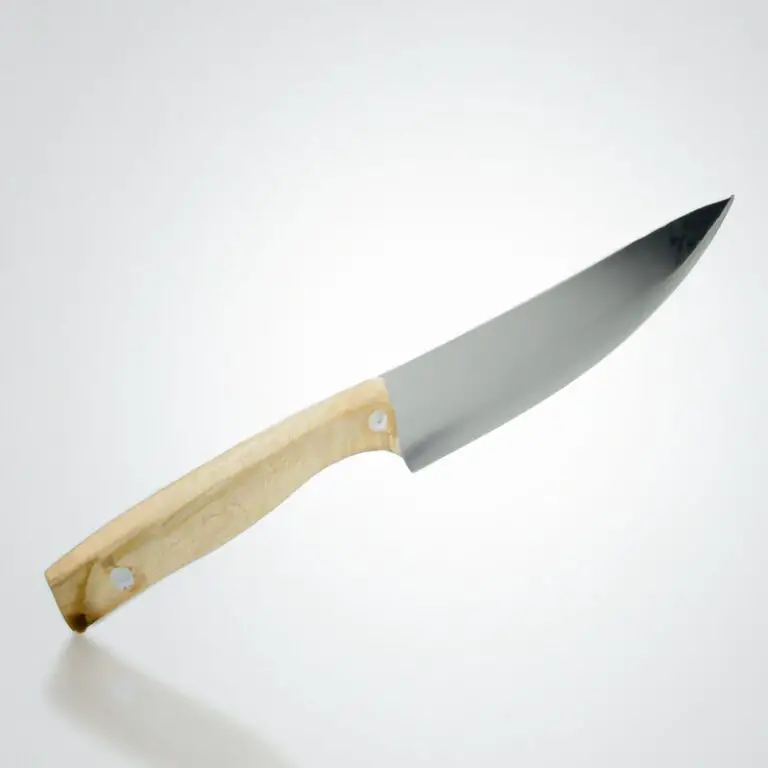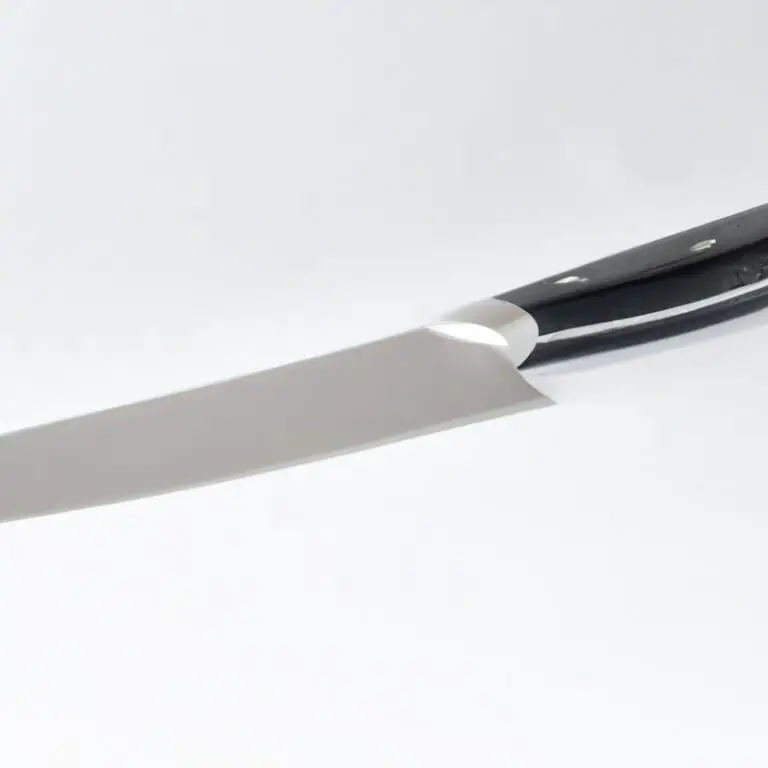How To Remove Stubborn Residue From a Chef Knife Blade? Easy And Effective!
Key Takeaways:
- Use a paste made of baking soda and water to remove stubborn residue from a chef knife blade.
- Soak the knife blade in warm soapy water for 10-15 minutes before scrubbing with a soft-bristled brush to remove residue.
- Avoid using harsh chemicals or abrasive cleaners on chef knife blades, as they can damage the blade.
- Regular maintenance and cleaning of your chef knife will help prevent the buildup of stubborn residue.
As a chef, your knife is your most essential tool in the kitchen. However, sometimes, even with the utmost care, stubborn residue can accumulate on the blade of your chef knife.
This residue can be challenging to remove, and if left unaddressed, it can damage your knife’s steel, potentially making it unusable.
In this article, we will explore safe and effective techniques for removing stubborn residue from your chef knife blade without harming the steel. We will also provide tips on preventing residue buildup and highlight the importance of promptly addressing any buildup that does occur.
| Method | Description | Pros | Cons |
| Soap and Water | Wash the blade with soap and water and scrub the residue off with a scrub brush or sponge. | Easy and accessible method. | May not remove all stubborn residue. |
| Vinegar Bath | Soak the blade in vinegar for a few hours and then scrub off the residue with a brush or sponge. | Effective for removing tough residue. | May alter the appearance of the blade if left too long in the vinegar bath. |
| Baking Soda Paste | Mix baking soda and water to create a paste and then apply it to the blade. Let it sit for 10-15 minutes before scrubbing with a brush or sponge. | Effective on tough residue and helps to eliminate odors. | May scratch the blade if too abrasive of a sponge is used. |
| Lemon Juice and Salt Scrub | Cut a lemon in half and sprinkle salt on the cut side. Scrub the blade with the lemon and salt, then rinse with water. | Effective on tough residue and helps eliminate odors. | The acid from the lemon may discolor or corrode the blade if left on too long. |
Understanding the nature of stubborn residue on chef knife blades
Stubborn residue on chef knife blades can occur due to a variety of factors. This residue may include food particles, oils, and minerals from food or water.
When these substances build up, they can harden and become difficult to remove with simple washing alone.
Factors that contribute to stubborn residue buildup on chef knife blades include acidic foods, high-heat cooking, cooking with salty or sugary substances, and washing the knives improperly. Understanding the nature of stubborn residue on chef knife blades is important as it allows for the proper selection of cleaning agents and methods.
Harsh chemicals and abrasive tools can damage the knife’s steel, leading to dullness, corrosion, and lowered performance.
Addressing stubborn residue promptly is crucial to prevent it from hardening and becoming even more difficult to remove. It is important to take steps to prevent stubborn residue buildup as well, such as washing knives immediately after use and avoiding harsh chemicals and abrasive tools.
Identifying safe and effective cleaning agents for chef knife blades
When it comes to identifying safe and effective cleaning agents for chef knife blades, it’s essential to avoid using harsh chemicals or abrasive cleaners that can damage the blade’s surface or compromise its functionality. Instead, opt for mild soap or dishwashing liquid and warm water for routine cleaning.
For tougher stains or residues, try using a non-abrasive cleaner specifically designed for kitchen knives, like Bar Keepers Friend or Bon Ami.
You can also make a paste of baking soda and water and apply it to the blade, then rinse and dry thoroughly. Avoid using steel wool or scouring pads, which can scratch the surface of the blade and leave it vulnerable to corrosion.
Remember to always read and follow the cleaning agent’s instructions and avoid any products that may contain ingredients that can damage the blade, such as bleach or ammonia.
Techniques for removing stubborn residue from chef knife blades without damaging the steel
To remove stubborn residue from chef knife blades without damaging the steel, follow these techniques:
- Use a baking soda and water solution: Mix baking soda and water to make a paste and apply it to the blade. Scrub the blade gently with a soft-bristled brush and wipe with a damp cloth.
- Try white vinegar: Soak the blade in white vinegar for a few minutes and then gently scrub with a soft-bristled brush. Wipe the blade dry with a cloth.
- Use lemon juice: Dip a cloth in lemon juice and rub it over the blade. Allow the solution to sit for a few minutes before scrubbing with a brush or wiping with a cloth.
- Try a commercial cleaner: Some cleaners are specifically designed for removing stubborn residue from chef knife blades. Follow the instructions on the label carefully.
Always remember to avoid using abrasive materials like steel wool or harsh chemicals that can damage the steel. After cleaning, dry the blade thoroughly and store it in a safe place to prevent future residue buildup.
How to properly soak and scrub your chef knife blade to eliminate stubborn residue
To properly soak and scrub your chef knife blade to eliminate stubborn residue, follow these steps:
- Fill a sink or basin with warm water and add a small amount of dish soap or a specialized knife cleaner.
- Place your knife in the water, submerging the blade but keeping the handle above water. Do not use hot water, as this can damage the metal of the blade.
- Let the knife soak for 5-10 minutes, or until the stubborn residue has loosened.
- Use a scrub brush or non-abrasive sponge to gently scrub the blade, focusing on areas with residue buildup. Avoid using steel wool or abrasive cleaners, as these can scratch or damage the blade.
- Rinse the knife under running water, making sure to remove all soap residue.
- Dry the knife thoroughly with a clean towel before storing it in a safe place.
Properly soaking and scrubbing your chef knife blade can effectively remove stubborn residue without damaging the steel, ensuring your knife stays in top condition for longer.
How to use specialized tools to remove stubborn residue from chef knife blades
Specialized tools can prove to be helpful in eliminating stubborn residue from chef knife blades. Here are some effective tools and techniques to do so:
- Whetstone: A whetstone is an excellent tool for removing stubborn residue from the knife blade. Slowly sharpen the knife blade in circular motions until the residue comes off.
- Honing Steel: Honing steel is a metal rod that helps align the knife edge. Lightly pass the knife blade over the honing steel at a 20-degree angle, pulling the knife towards you to remove residue.
- Plastic Scouring Pads: Use a plastic scouring pad to gently remove stubborn residue from the blade. Scrub with a circular motion until the residue disappears.
- Soft Cloth or Brush: For gentle cleaning of the knife blade, use a soft cloth or brush. Apply only a mild cleaning agent and rub in a circular motion.
- Chemical Cleaners: Chemical cleaners should only be used as a last resort. Use only mild cleaners and avoid those containing bleach or ammonia.
Remember that specialized tools should be used with caution, as they can damage your knife blade. Always read and follow manufacturer instructions before using any tool on your knife.
The crucial role of maintenance in preventing stubborn residue buildup on chef knife blades
Regular maintenance is essential to prevent stubborn residue buildup on chef knife blades. Keeping your knives clean and dry after use is crucial to prevent food particles and moisture from solidifying and forming stubborn residue.
In addition to that, using a honing steel regularly can help maintain the sharpness and structural integrity of the blade.
It’s also important to avoid using abrasive sponges or harsh chemicals when cleaning knife blades, as this can damage the blade and promote the buildup of residue. Proper storage, such as in a knife block or sheath, can also help prevent residue buildup.
By taking these simple steps, you can extend the life of your chef knife and prevent stubborn residue from forming in the first place.
Tips for preventing stubborn residue buildup on chef knife blades during use
To prevent stubborn residue buildup on chef knife blades during use, follow these tips:
- Use a cutting board: Avoid using hard surfaces like countertops or plates to cut your food with a chef knife as it can cause nicks and scratches, leading to stubborn residue buildup.
- Clean the blade frequently: Clean the blade with soap and water after each use to prevent any leftover residue from hardening and becoming difficult to remove later.
- Avoid acidic foods: Acidic foods like lemons, limes, and tomatoes can cause the blade to darken and discolor, leading to stubborn residue buildup.
- Avoid water exposure: Don’t leave your knife soaking in water for long periods as it can damage the blade’s steel and cause stubborn residue buildup.
- Dry thoroughly: Dry the knife thoroughly with a clean cloth after washing it to prevent any remaining moisture from causing rust or corrosion.
By following these tips, you can prevent stubborn residue buildup on your chef knife blade during use and reduce the need for frequent deep cleaning.
What not to do when cleaning stubborn residue from chef knife blades
When cleaning stubborn residue from chef knife blades, it is important to avoid certain practices to prevent damaging the blade or injuring yourself. Here are some “What not to do” tips:
- Do not use abrasive cleaners such as scouring pads or steel wool. These harsh materials can scratch and damage the blade.
- Do not soak the knife for an extended period of time. Prolonged exposure to water can cause rust and corrosion on the blade.
- Do not use bleach or chlorine-based cleaners as they can cause discoloration and damage the blade.
- Do not use lemon or vinegar-based cleaners. The acid in these kitchen staples can harm the blade’s finish.
- Do not use a dishwasher to clean your chef knife. The intense heat and agitation can cause damage to the blade and handle.
By avoiding these common cleaning mistakes, you can safely and effectively remove stubborn residue from your chef knife without causing any damage.
Importance of addressing stubborn residue buildup on chef knife blades promptly
It is crucial to address stubborn residue buildup on chef knife blades promptly. If left unattended, residue buildup can damage the blade and compromise its integrity, making it less effective and harder to use.
It can also affect the flavor and appearance of food, and in some cases, it can lead to cross-contamination and foodborne illnesses.
Cleaning the knife regularly after use and removing stubborn residue as soon as possible will help maintain its sharpness and prolong its lifespan. Neglecting to clean and remove buildup promptly can lead to costly repairs or replacements in the long run.
Therefore, it is essential to make cleaning your chef knife blade a priority to ensure its optimal performance and hygiene.
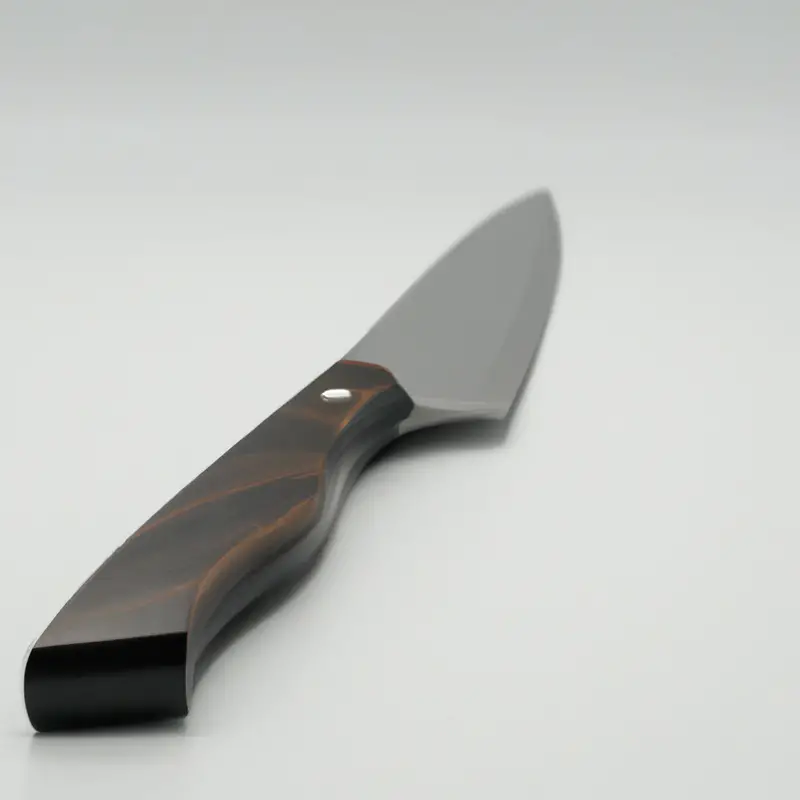
How often should you clean your chef knife blade to prevent stubborn residue buildup
To prevent stubborn residue buildup on a chef knife blade, it’s important to clean the blade regularly. Ideally, you should be cleaning your knife blade after every use to prevent any stubborn residue from forming in the first place.
If you use your knife extensively, then at a minimum, it should be cleaned at least once a day.
Knife maintenance should be a routine aspect of your kitchen duties. Avoid leaving your knife with any residue for an extended period.
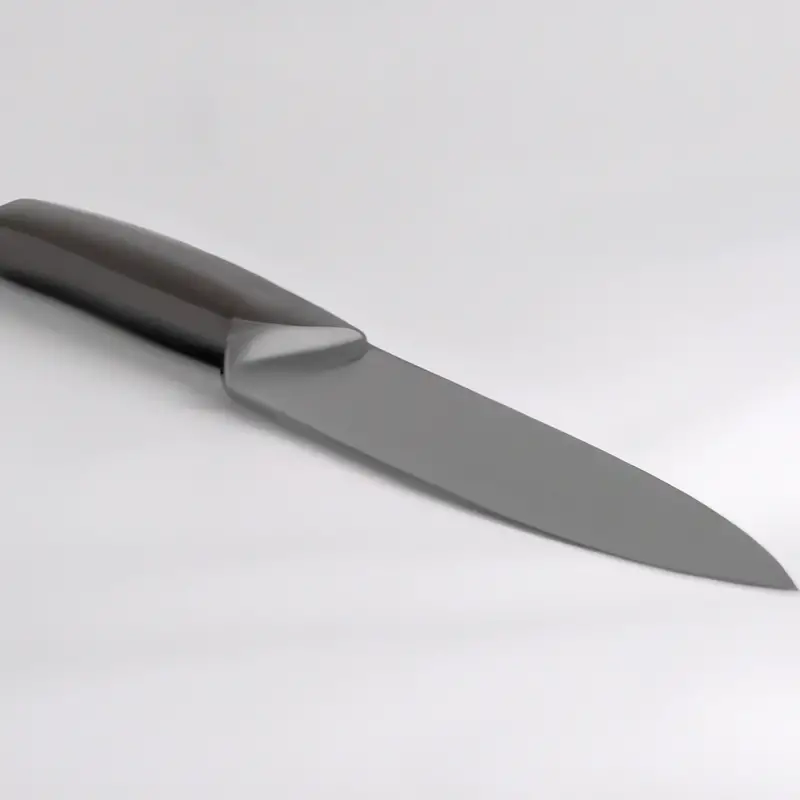
Final Verdict
As a chef or home cook, it’s crucial to maintain your chef knife blade’s cleanliness and sharpness to ensure safety, precision, and longevity. Stubborn residue buildup on the blade can be detrimental to both the knife’s performance and your cooking skills.
Now that you understand how to identify, prevent, and remove stubborn residue safely and effectively, it’s time to implement these practical tips and techniques in your daily kitchen routine.
Remember to use only safe and appropriate cleaning agents, tools, and methods to avoid damaging the blade’s steel. By taking proper care of your chef knife’s blade, you can enjoy effortless and enjoyable cooking experiences for years to come.
Happy cooking!

